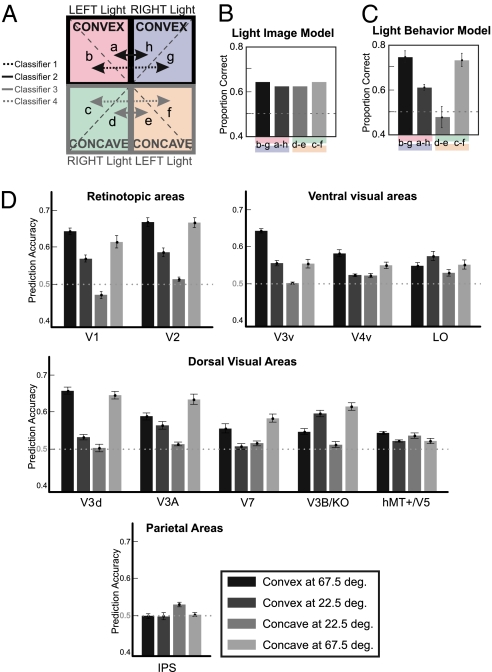Fig. 4.
Light Classifier. MVPA for the classification of Light (left vs. right). (A) Classifier 1 compares activations related to left-lit convex stimuli (67.5°) vs. right-lit convex stimuli (67.5°). Classifier 2 compares activations related to left-lit convex stimuli (22.5°) vs. right-lit convex stimuli (22.5°). Classifier 3 compares activations related to right-lit concave stimuli (22.5°) vs. left-lit concave stimuli (22.5°). Finally, Classifier 4 compares activations related to right-lit concave stimuli (67.5°) vs. left-lit concave stimuli (67.5°). (B). Expected classification of the Light Image Model. This model takes only into account the variation in pixel intensities between a pair of images. (C) Expected classification accuracies of the Light Behavior Model. This model performs a Bayesian inference based on the prior assumption that light comes from above-left as measured behaviorally for each observer (Fig. 1C) and predicts an asymmetrical performance across the four lighting conditions. (D) Classification accuracies for each of the four lighting directions. Mean classification accuracy is based on 100 voxels per area. Error bars indicate SEM across observers (n = 7). The dashed line indicates the chance classification level (50%).

